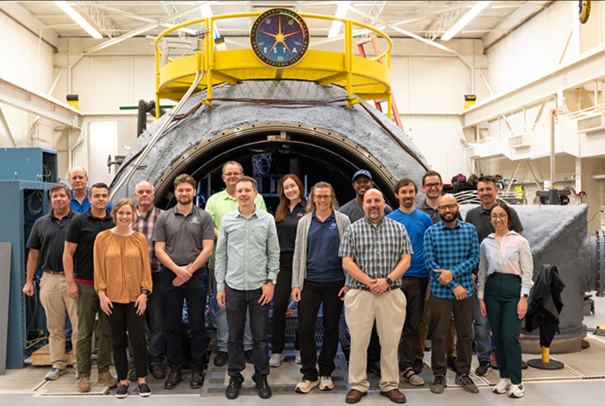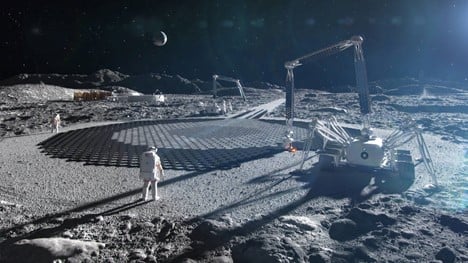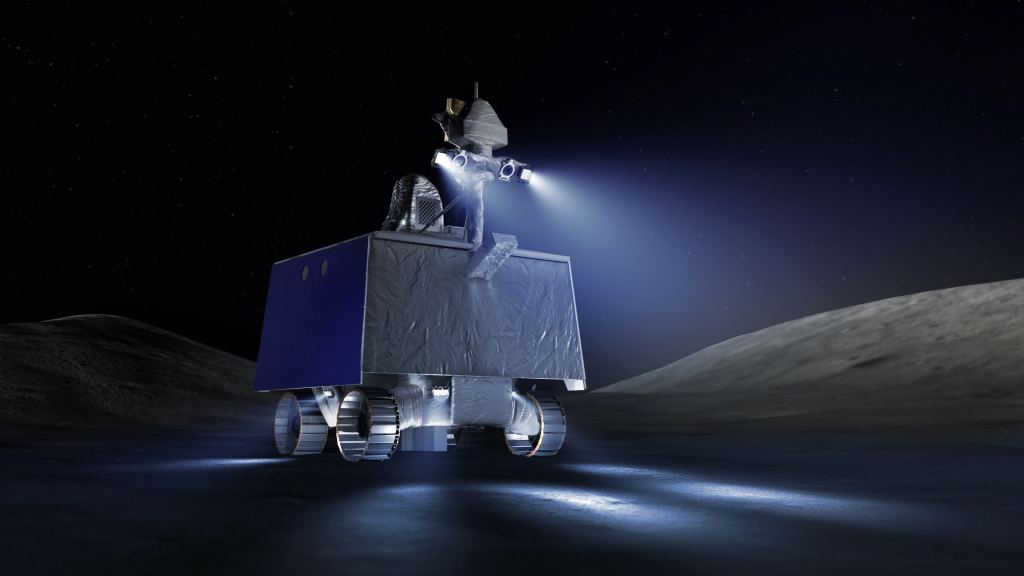When there's a permanent base on the Moon, astronauts will need a way to replenish their oxygen supply. Fortunately, there's an almost infinite amount of oxygen in the surrounding regolith, locked up the rocks and soil. The key would be to figure out a cost-effective way to extract it.
Now, NASA has demonstrated that they can harvest oxygen from the lunar regolith, even in the vacuum conditions of space. They used a device called a carbothermal reactor to successfully extract oxygen from a simulated lunar regolith, while also simulating the heat that would be produced by a solar energy concentrator.
While oxygen has previously been extracted from lunar regolith simulant, this was the first time the extraction was performed in a vacuum environment, inside one of the vacuum chambers at Johnson Space Center in Houston, Texas. NASA says this demonstration helps pave the way for lunar astronauts to be able to incorporate in-situ resource utilization by being able to use the resources in the lunar environment,
"This technology has the potential to produce several times its own weight in oxygen per year on the lunar surface, which will enable a sustained human presence and lunar economy," said Aaron Paz, NASA senior engineer project manager of the Carbothermal Reduction Demonstration (CaRD) team at JSC.
Although the process of heating the regolith is relatively straightforward, NASA needed to be able to mimic the vacuum conditions of space while using the kind of power that would be available to future lunar explorers.
A carbothermal reactor uses the process of heating materials to release any embedded oxygen. Carbothermal reduction has been used for decades on Earth to produce items like solar panels and steel by producing carbon monoxide or dioxide using high temperatures.
The CaRD team test was performed inside a special spherical chamber with a 4.5 meter (15-foot) diameter called the Dirty Thermal Vacuum Chamber. The chamber is considered "dirty" because the samples don't have to be sterile.
The team used a high-powered laser to simulate heat from a solar energy concentrator and melted the lunar soil simulant within a carbothermal reactor developed for NASA by Sierra Space Corporation.
In a press release, NASA said that after the soil was heated, the team was able to detect oxygen and carbon monoxide using a device called the Mass Spectrometer Observing Lunar Operations (MSolo).
One of the next steps is to perform a test like this on the Moon, using actual lunar regolith. Two upcoming robotic missions to the Moon's South Pole will carry devices similar to MSolo: the Polar Resources Ice Mining Experiment-1 (PRIME-1) will be the first mission designed to harvest water ice from the Moon. It will use a drill and MSolo will evaluate the drill cuttings for water, oxygen and other chemical compounds. For this mission, NASA has selected the commercial space company Intuitive Machines to set down a lander on the lunar south pole. The current launch date is targeted for June of this year, 2023.
The second mission, NASA’s Volatiles Investigating Polar Exploration Rover (VIPER) is set to launch in November 2024 that will explore Mons Mouton, a large flat-topped mountain inside a crater at the Moon's south pole, to get a close-up view of the location and concentration of water ice and other potential resources. The golf-cart-sized rover is due to be sent to the Moon by a SpaceX Falcon Heavy rocket in late 2023, as the primary payload on Astrobotic's Griffin robotic lunar lander.
 Universe Today
Universe Today



